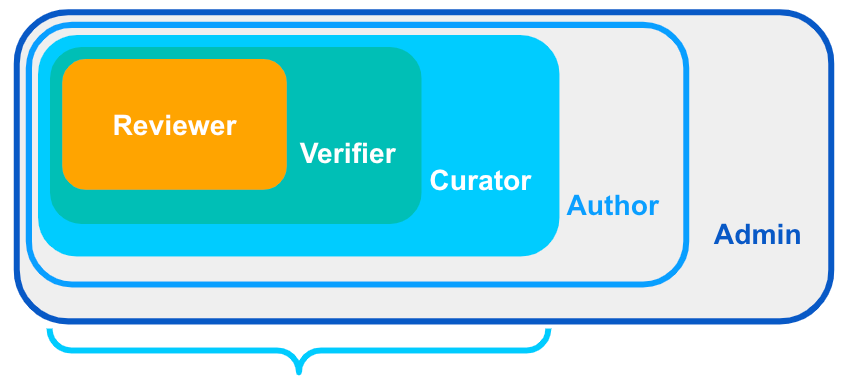Curator Tasks and Responsibilities
As a curator, you manage and contribute to schema mapping, mastering, golden records, and categorization projects.

User roles are cumulative: in addition to the tasks and responsibilities described in this guide, curators can complete all actions available to reviewers and verifiers.
Introducing the Curator Role
You provide initial data expertise to validate and train models for projects in Tamr Core, as well as complete any of the tasks that a reviewer or verifier can do.
Curators cannot add projects, although they can edit project settings and delete them. Only team members with the author or admin role can create projects and assign them to policies.
Schema Mapping Workflow
In a schema mapping project, you design the unified schema either by using a standard target schema your organization already has (often part of a document called a mapping specification) or by developing one specific to your needs (see Creating a Unified Schema). You then map the attributes, or columns, from input datasets to unified attributes, which will be used to train the model for recommending subsequent mappings.
Mastering and Golden Records Workflow
In a mastering project, you are responsible for:
- Enabling record grouping and choosing the attributes that are key to finding obviously-duplicated records.
- Defining the blocking model to optimize the comparisons Tamr Core makes to identify pairs of records or groups as matching and non-matching.
- Labeling an initial set of pairs to train the model.
- Running jobs to train the model with the feedback that team members provide on pairs and clusters.
In a golden records project, you are responsible for configuring the rules that consolidate a cluster of records from a mastering project into a single golden record with data values that best describe the single entity represented by that cluster.
Categorization Workflow
In a categorization project, you are responsible for:
- Uploading and, if necessary, editing the taxonomy used to categorize records.
- Categorizing a subset of records to train the model.
- Running jobs to train the model with the feedback that team members provide on record categorizations.
Transformations
You can also define transformations in schema mapping, mastering, and categorization projects to modify the unified dataset. For example, you can concatenate first and last name fields, remove whitespace, or apply consistent date formatting.
Helpful Pages for Curators
Updated about 2 years ago